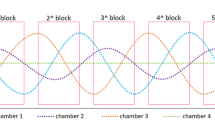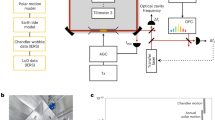Abstract
IN reference to the Froude thermometer, to which attention is drawn in your last number (p. 6) by Mr. Hazen, I feel confident that if its merits were better known it would be universally employed, not only as insuring among all observers absolute uniformity in the record of the temperature of the air, but as affording the only satisfactory means of determining the degree of saturation by means of the wet and dry bulb. Nothing is more perplexing to the meteorologist than the selection of his screen and of an appropriate site. The system of whirling a thermometer rapidly through the air effectually dwarfs all external influences from the rapidity with which renewed particles constantly impinge on the bulb, and it is well known that in the case of the wet bulb the indication is greatly affected by the presence or absence of wind. I found this to be practically the only means of determining the temperature and humidity in a steamer at sea. The only objection was the inconvenience and risk of whirling small thermometers on a string, and the difficulty of reading without affecting their record; but this I completely got over as explained in my “Visit to South America,” 1878, by using a simple whirling table, on which the thermometers were fixed, the reading being effected by bringing them in succession under a plate of glass covering part of the circumference of the table. Nothing can exceed the simplicity of such an arrrangement, which is almost independent of position, and with small thermometers affords a uniformity and accuracy impossible of attainment with a fixed thermometer, as it becomes a repeating instrument by a few extra turns of the table, thus insuring freedom from error of observation. I have used this system for many years with most satisfactory results.
This is a preview of subscription content, access via your institution
Access options
Subscribe to this journal
Receive 51 print issues and online access
$199.00 per year
only $3.90 per issue
Buy this article
- Purchase on Springer Link
- Instant access to full article PDF
Prices may be subject to local taxes which are calculated during checkout
Similar content being viewed by others
Rights and permissions
About this article
Cite this article
CLARK, E. Rotating Thermometers. Nature 30, 32–33 (1884). https://doi.org/10.1038/030032f0
Issue Date:
DOI: https://doi.org/10.1038/030032f0
Comments
By submitting a comment you agree to abide by our Terms and Community Guidelines. If you find something abusive or that does not comply with our terms or guidelines please flag it as inappropriate.



